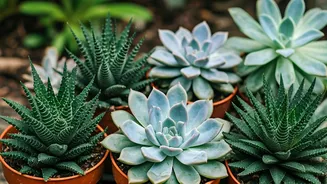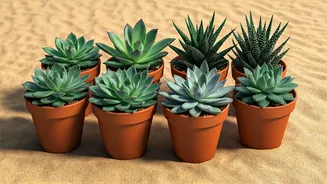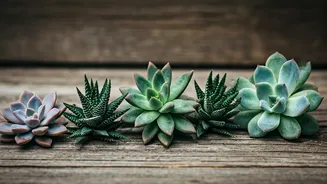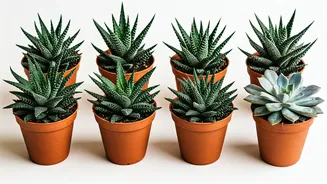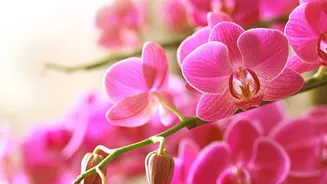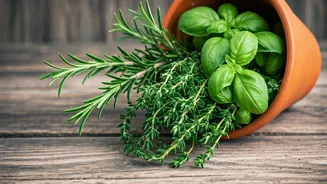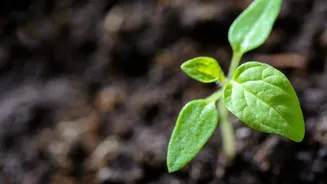Succulents: Endurance Champions
Succulents, celebrated for their ability to store water in their leaves, stems, and roots, are well-adapted to arid conditions, making them exceptionally
low-maintenance. Their water-retentive qualities not only enable survival in drought-prone areas but also contribute to their remarkable lifespan. Unlike many other plants that require frequent watering and specialized care, succulents often thrive with minimal intervention. This natural resilience is why several species can flourish for decades. Proper soil drainage, adequate sunlight, and infrequent watering are typically sufficient to keep them healthy and vibrant. The diversity within the succulent family is astounding, with a wide array of shapes, sizes, and colors, which makes them highly versatile for various garden designs. Their ability to propagate easily from cuttings or leaves also adds to their appeal, making it simple to expand your collection.
Echeveria: Rosette Elegance
Echeverias are recognized for their exquisite rosette formations, often resembling delicate flowers. These succulents come in a vast range of colors, from soft greens and blues to vibrant reds and purples, providing a visual feast. They typically thrive in well-draining soil and benefit from ample sunlight, which enhances their color and form. While specific lifespans can vary depending on care and environment, many Echeveria varieties can survive for up to 50 years. These plants are relatively easy to propagate through leaf cuttings or offsets, allowing gardeners to expand their collections effortlessly. They are popular choices for rock gardens, container gardens, and indoor displays, adding a touch of elegance wherever they are placed. To keep Echeverias happy, avoid overwatering, especially during colder months, as this can lead to root rot. Regular inspection for pests, like mealybugs, is also advisable. With proper care, these stunning succulents can become a long-lasting highlight of any garden.
Sempervivum: The Houseleeks
Sempervivums, commonly known as houseleeks, are renowned for their hardiness and ability to thrive in harsh conditions. These plants feature tightly clustered rosettes that can vary in color and texture, often displaying striking patterns. Their name, meaning "always alive," reflects their remarkable resilience. Sempervivums are well-suited to rock gardens, green roofs, and other areas with poor soil and full sun exposure. Many species can live for 50 years or longer with minimal care. They produce offsets, or “chicks,” that create a dense mat of plants over time, adding to their visual appeal. These succulents are drought-tolerant and require little water, making them ideal for gardeners seeking low-maintenance options. Their ability to withstand extreme temperatures also contributes to their longevity. For optimal growth, provide well-draining soil and protect them from excessive moisture. Regular removal of dead leaves and a periodic check for pests will ensure the continued beauty and vitality of your sempervivum collection.
Agave: Majestic Spikes
Agaves are striking succulents that showcase dramatic architectural forms, often characterized by sharp, pointed leaves. These plants are native to arid regions and are incredibly drought-tolerant. They come in various sizes, with some species growing quite large, making them a focal point in any landscape. Agaves can live for decades, with some species known to survive for over 50 years. They thrive in full sun and well-draining soil, requiring minimal water once established. Propagation is typically done through offsets, or “pups,” that sprout from the base of the plant. Because many Agave species have sharp spines, it’s important to handle them with caution. While Agaves are low-maintenance, they can be susceptible to root rot if overwatered. Periodic inspection for pests and diseases is advisable. Their unique forms and hardiness make Agaves a great choice for those seeking to incorporate architectural interest into their gardens.
Crassula: Diverse Species
The Crassula genus includes a diverse range of succulents, known for their varied shapes and sizes. Popular types include the Jade plant (Crassula ovata) and the Buddha's Temple (Crassula pyramidalis). These succulents are generally easy to care for and can thrive both indoors and outdoors. They typically have fleshy leaves that store water, contributing to their drought tolerance and longevity. Crassulas can live for many years, often surpassing the 50-year mark with proper care. They appreciate bright light and well-draining soil and are relatively easy to propagate from cuttings. Overwatering is a common pitfall; therefore, it's best to allow the soil to dry out completely between waterings. Crassulas come in various forms, from small, compact plants to larger, shrub-like varieties. Their versatility makes them suitable for various garden settings, including container gardens, rock gardens, and indoor displays. Periodic fertilization during the growing season can promote healthy growth.
Aloe: Healing Properties
Aloe plants are recognized not only for their beauty but also for their medicinal properties, particularly the gel found within their leaves, which is used to soothe burns and skin irritations. They come in many varieties, with the Aloe vera being among the most well-known. These succulents feature fleshy leaves that often have serrated edges. Aloes are adaptable to various environments, thriving in warm climates and requiring minimal care. With proper care, they can live for several decades, with some species exceeding 50 years. They prefer bright, indirect light and well-draining soil. Aloe plants are drought-tolerant and benefit from infrequent watering, especially during cooler months. Propagation is usually done through offsets, which can be easily separated from the mother plant. Aloes are popular choices for both indoor and outdoor gardens, adding a touch of natural beauty and providing a source of natural remedies. Proper care involves avoiding overwatering and protecting them from frost.
